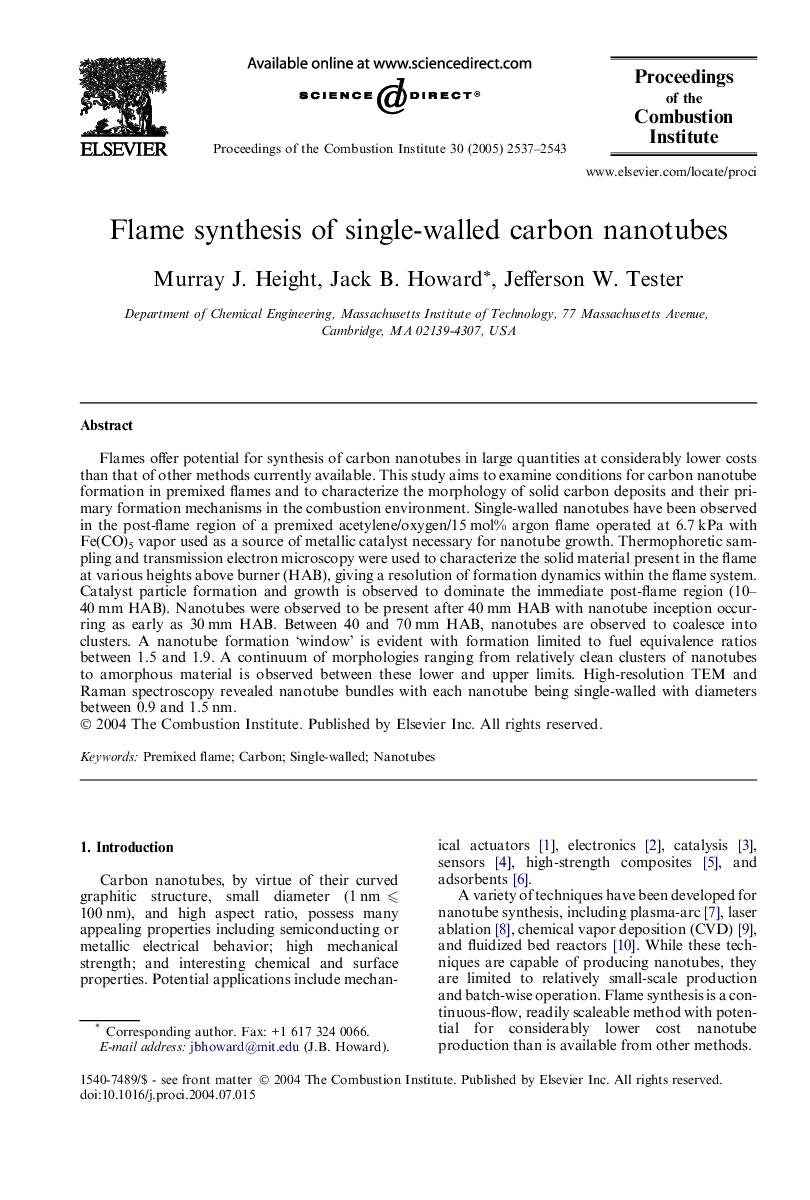| Article ID | Journal | Published Year | Pages | File Type |
|---|---|---|---|---|
| 241001 | Proceedings of the Combustion Institute | 2005 | 7 Pages |
Flames offer potential for synthesis of carbon nanotubes in large quantities at considerably lower costs than that of other methods currently available. This study aims to examine conditions for carbon nanotube formation in premixed flames and to characterize the morphology of solid carbon deposits and their primary formation mechanisms in the combustion environment. Single-walled nanotubes have been observed in the post-flame region of a premixed acetylene/oxygen/15 mol% argon flame operated at 6.7 kPa with Fe(CO)5 vapor used as a source of metallic catalyst necessary for nanotube growth. Thermophoretic sampling and transmission electron microscopy were used to characterize the solid material present in the flame at various heights above burner (HAB), giving a resolution of formation dynamics within the flame system. Catalyst particle formation and growth is observed to dominate the immediate post-flame region (10–40 mm HAB). Nanotubes were observed to be present after 40 mm HAB with nanotube inception occurring as early as 30 mm HAB. Between 40 and 70 mm HAB, nanotubes are observed to coalesce into clusters. A nanotube formation ‘window’ is evident with formation limited to fuel equivalence ratios between 1.5 and 1.9. A continuum of morphologies ranging from relatively clean clusters of nanotubes to amorphous material is observed between these lower and upper limits. High-resolution TEM and Raman spectroscopy revealed nanotube bundles with each nanotube being single-walled with diameters between 0.9 and 1.5 nm.
